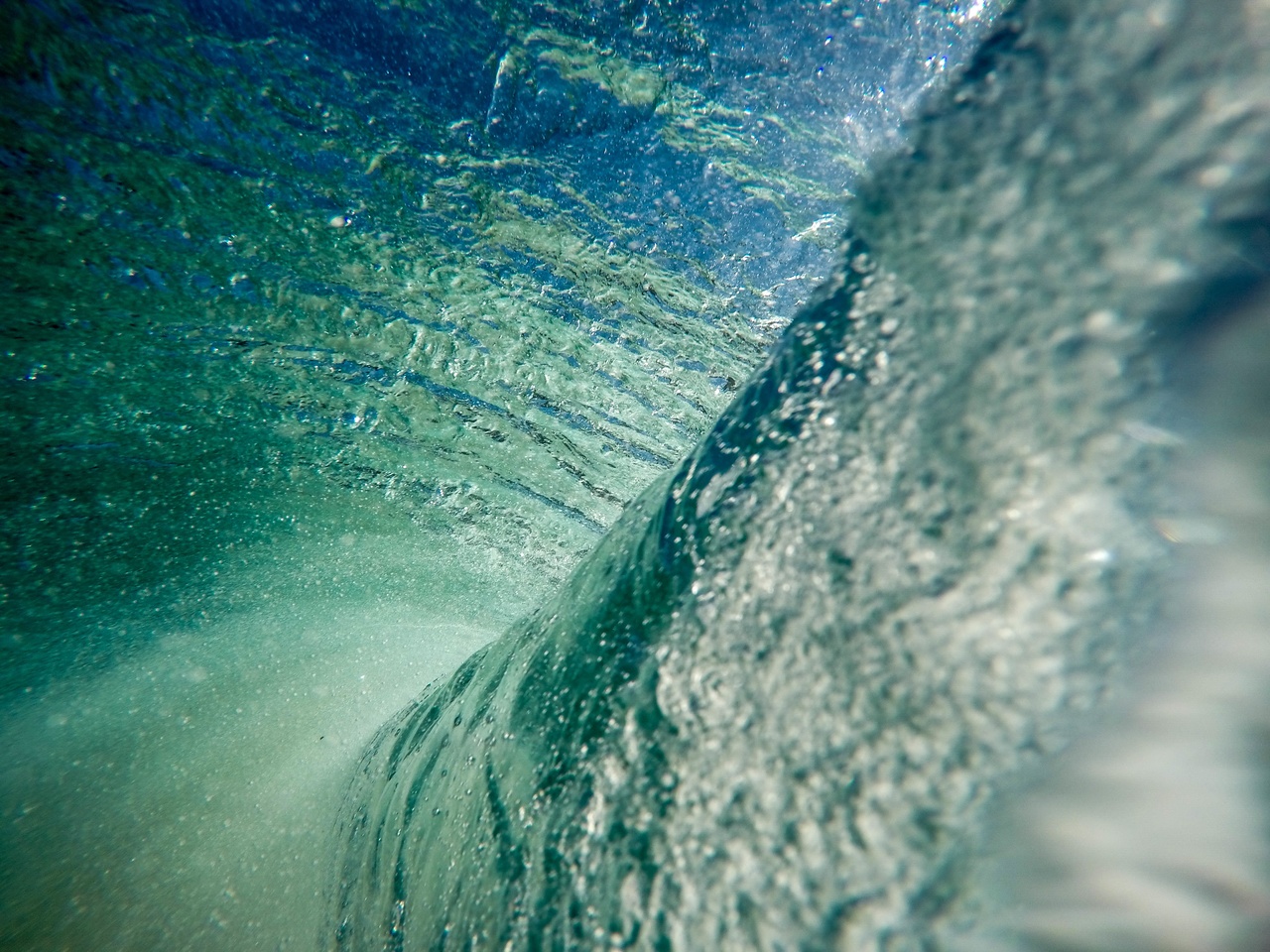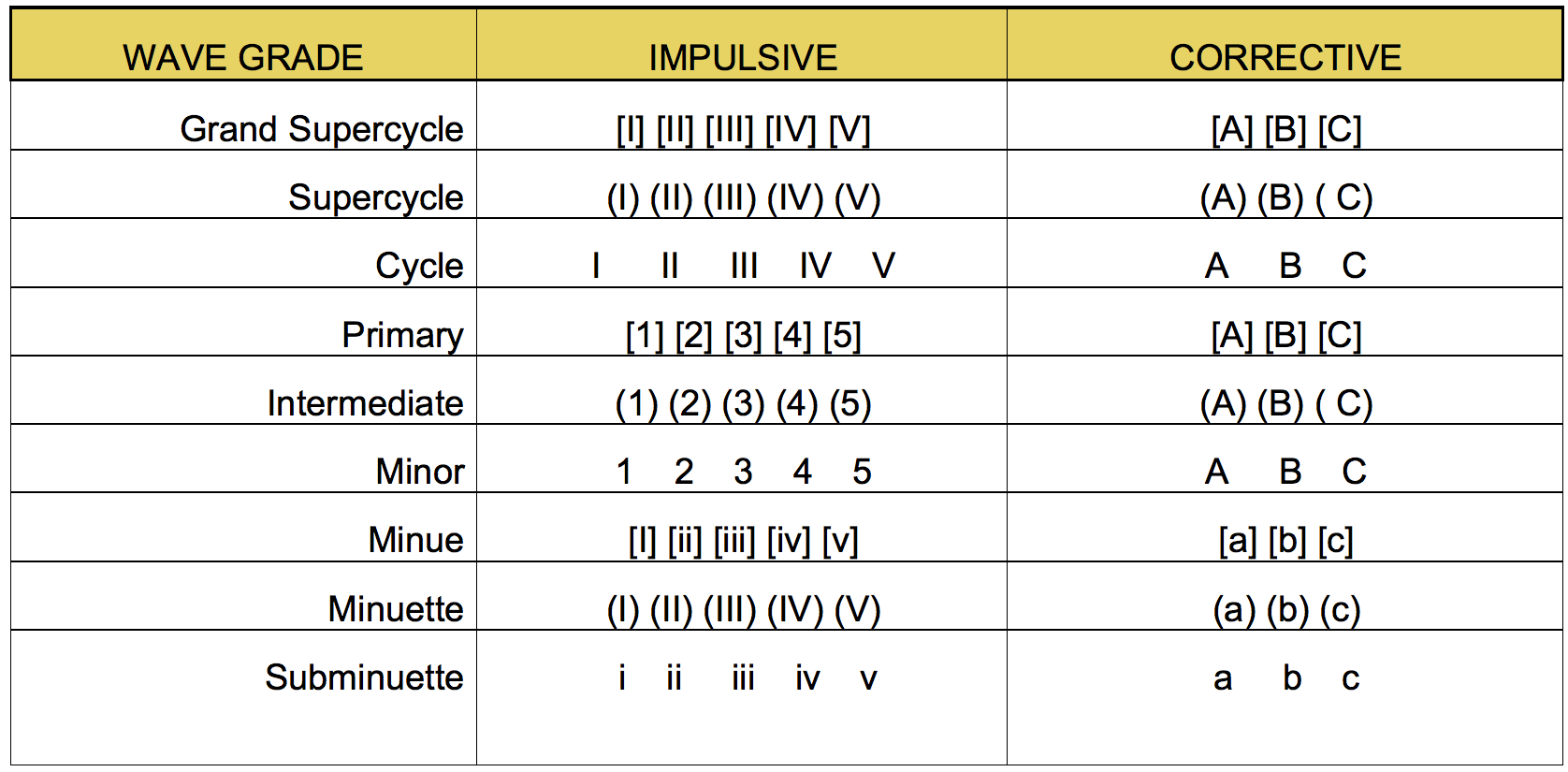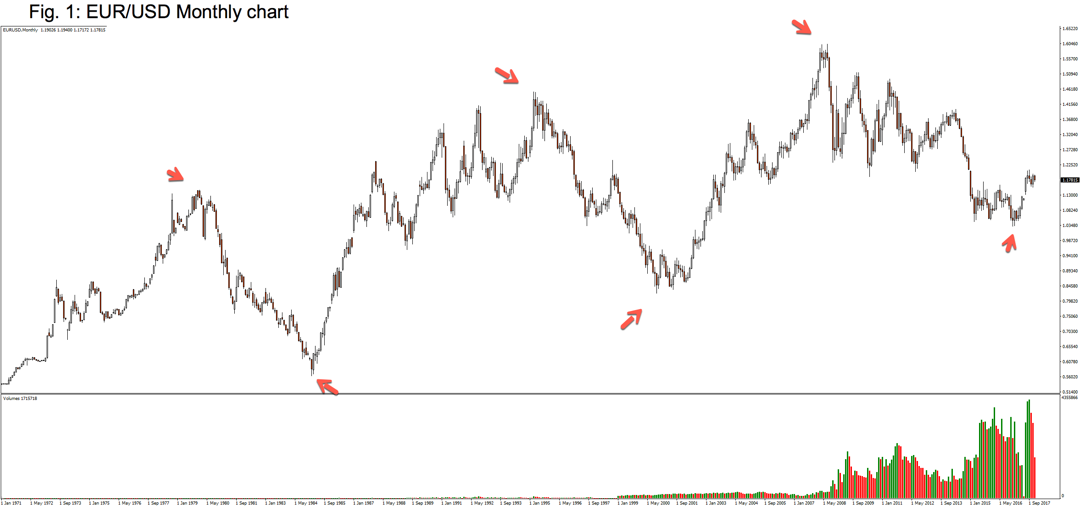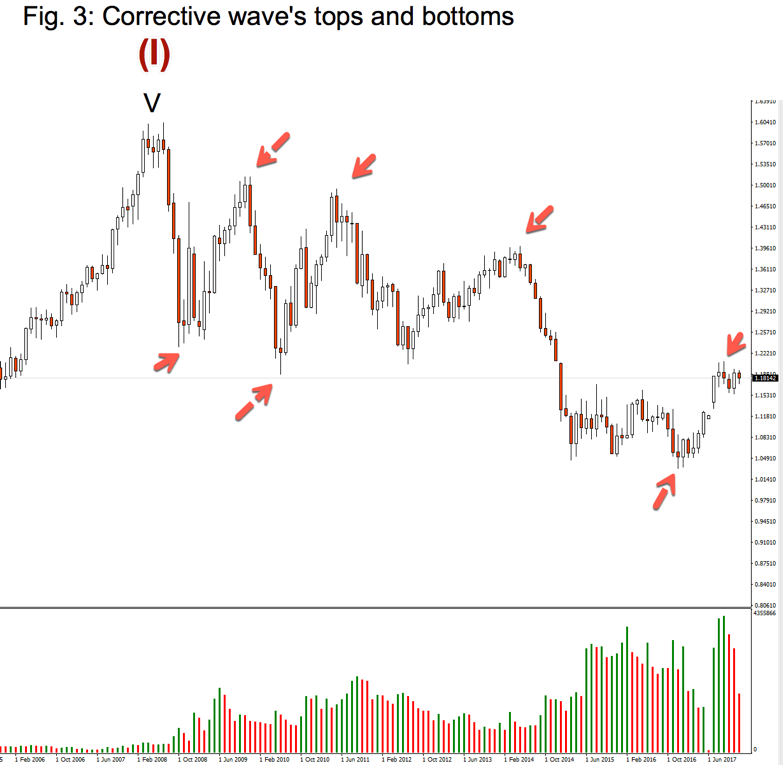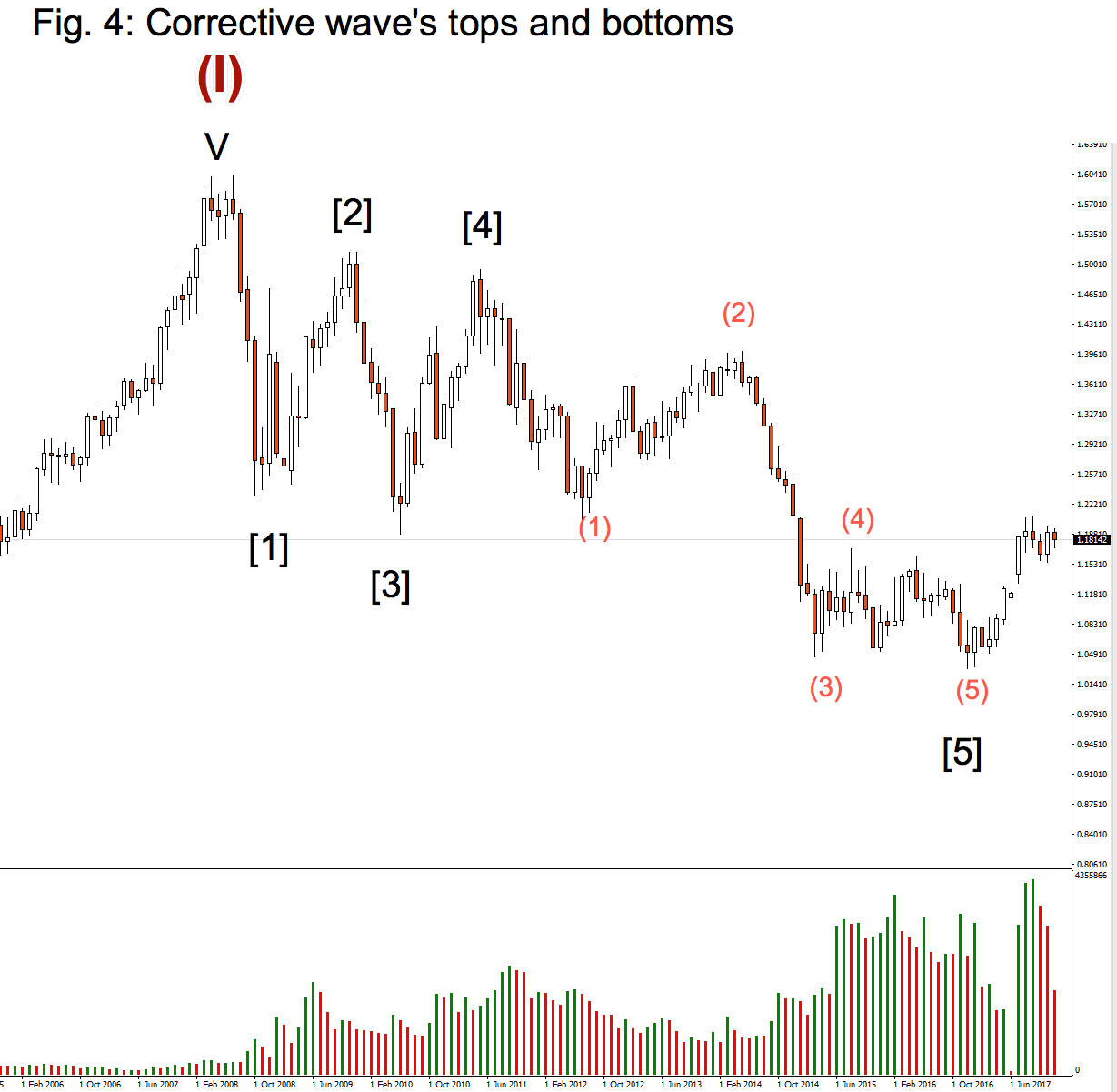v
Introduction
One of the drawbacks of The Elliott Wave Theory is the challenge that wave-counting imposes to outsiders or rookies in the theory. When faced with a real price chart, a novel Elliott Wave trader must use a methodology to classify market movements into wave patterns, unless he or she enjoy being lost in the forest.
There are two ways to a proper wave counting: from bottom to top or Top down. Personally, I favour top down, so it’s the method we will use here. I like to see the big picture first, and I guess you too. It’s much simpler and helps us to avoid counting errors.
Before proceeding to our practical exercise, let’s see the notation. Elliott described nine wave degrees: From the tiniest observable on an hourly chart to the to the largest available to him. He chose the following names for these degrees from largest to smallest: Grand Supercycle, Supercycle, Cycle, Primary, Intermediate, Minor, Minute, Minuette, Subminuette. The specific way to label waves is not critical, as we will see, It’s just an organized labelling system to differentiate the different wave degrees with which elliotticians are comfortable with, so it’s widely used.
Panoramic View – The Impulsive wave
Let’s do this using the EUR/USD pair. We’ll begin with the big picture using a monthly chart we’ll label the major waves, and from there we’ll go to daily and hourly charts.
Fig.1 shows the major tops of the monthly chart with orange arrows pointing to major market tops and bottoms. This panoramic view allows the following wave count, and we are going to assume chart shows a cycle view. The main advice, according to all authors, and Elliott himself is to look at relevant movements in size and time length. In figure 1 we observe that the arrows are pointing to tops and bottoms that match that criterion, ignoring all relatively minor tops and bottoms.
Therefore, the first left arrow is the end of wave I; the second arrow marks the end of a wave II, the third arrow corresponds with the end of wave III, which is complex but fits the pattern.
The next arrow is the end of wave IV, and the fifth arrow shows the end of wave V, completing a wave (I) count of a cycle. Fig 2 shows the right labelling:
2. Panoramic view – The corrective segment
Now we know, the right side of the chart, after the (I) is a correction wave within this super-cycle. So let´s Focus on that leg and dissect its waves, using the same method. Fig. 3 shows the arrows on major tops and bottoms, although they belong to a primary trend, which is one level below a cycle.
There is one possible “major” bottom not pointed by an arrow. The reason is, that bottom is not below the previous bottom. Therefore it’s not a major bottom. That’s important because it produces a different labelling. The way it is, we observe that we have five major waves as fig 4 shows:
Therefore, we have ended the wave A of the correction and wave B has started.
That’s it for today.
Take your trading to the next level with our 14 Day, No Obligation, Free Trial. You will soon discover why we are trading’s best-kept secret. We are successfully building the world’s largest group of profitable traders and would like you to be part of it.
You can join for as little as $19.99 per month, no contract, cancel anytime. Just one profitable trade each month covers this amount, the rest is pure profit. You will benefit from unparalleled access to our professional traders, our transparent trading performance, our LiveTradeRooms and access to the most comprehensive trading education on the market. What have you got to lose? JUST CLICK HERE TO GET STARTED NOW and see how real money is made!
Featured image courtesy of https://pxhere.com
